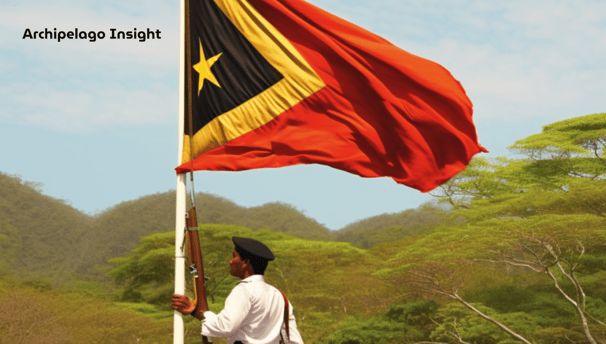Timor Leste's Founding Fathers' Difficult Road to Retaining the National Narrative (Part 1)
The first Timor Leste Election in 2002, where Xanana Gusmão won with a significant majority.
HISTORY
Irsyad Mohammad
9/26/20233 min read


Xanana Gusmão, the leader of the armed resistance through the Timor Leste National Liberation Army (Falintil) against Indonesian rule in Timor Leste, and Francisco Xavier do Amaral, the first President of East Timor after the unilateral proclamation of independence for Timor Leste on 28 November 1975, before the Indonesian invasion (Operation Seroja) participated in the first Timor Leste Election on April 14, 2002.
Also, Xavier do Amaral was one of the architects of the Revolutionary Front for the Independence of East Timor (Fretilin), a Timor Leste political party that had a significant impact on the independence struggle. Because he was an Indonesian prisoner and secured the horses belonging to the Seroja Operations Commander, Lt. Gen. (Ret.) Dading Kalbuadi in Cijantung, Fransisco Xavier do Amaral was not as influential as Gusmão.
As expected, the first election was won by Xanana Gusmão, who has become a media darling and the leader of the National Council of Timorese Resistance (CNRT), a confederation of political parties that supports East Timor's independence; the CNRT is comparable to the PLO in Palestine.
Gusmão received 82.69 percent of the vote, while Francisco Xavier do Amaral received 17.31 percent. Fretilin won 57.37% of the vote in legislative elections conducted by the United Nations in 2001, making Fretilin Secretary General -- Mari Alkatiri the first Prime Minister of Timor Leste.
Given that Mari Alkatiri is an Arab;Muslim in a predominantly Catholic nation, the fact that he became prime minister comes as a surprise to a great number of people. After the transfer of UN sovereignty to Timor;Leste in Dili, which was witnessed by President Megawati, former President Bill Clinton, and Kofi Annan, Indonesia directly acknowledged Timor Leste's independence to the international community.
In legal terms, Timor Leste is on its own to face the difficulties and risks of its own future. After Indonesia's defeat in the 1999 Timor Leste Independence Referendum, the Pro-Integration militia carried out scorched earth, resulting in clashes between the pro-independence and pro;integration camps, which left Timor Leste with a number of problems, including a damaged infrastructure and buildings.
Seventy percent of Indonesia's historic buildings were destroyed by fire, and numerous electrical and telephone cables were damaged, so the nation had to be rebuilt from beginning. Timor Leste was the second most developed province outside of Java when it became the 27th province of Indonesia, after Bali.
In the past, 90% of Timor Leste's regional budget was sustained by the budget of the central government, which was investing heavily in the country's development. As a result, support for Timor Leste's independence decreased, as well as the need to demonstrate to the international community that Timor Leste thrived under Indonesia rather than the Portuguese.
Under Indonesian rule, the majority of Timorese received an education and even had the opportunity to study, whereas during the Portuguese era, the indigenous Timorese population was forbidden from walking on bitumen.
The Christ King statue in Dili, the second largest statue of Jesus in the world, is perhaps one of the few remnants of Indonesian heritage in Timor-Leste after independence. Many of the structures constructed by Indonesia were destroyed by fire.
Timor-Leste, a newly independent nation, also had to tackle the challenge of establishing political and economic stability. The country was extremely fragile. Numerous citizens escaped to East Nusa Tenggara and other nations. Even though the United Nations has transferred sovereignty to Timor-Leste, the Australian-led United Nations peacekeeping force remains in Timor-Leste to maintain security.
The arrival of Australian-led UN peacekeeping forces (INTERFET) was precipitated by the riots that followed Indonesia's loss in the 1999 Timor Leste Independence Referendum.
President Xanana Gusmão and Prime Minister Mari Alkatiri were tasked with constructing Timor Leste's future and determining its national narrative and future course. Naturally, as the first President and Prime Minister, their every action was scrutinized and used as a model for future generations.
For some in Timor-Leste, Mari Alkatiri's ascension to the position of prime minister was a surprise. In addition, Mari Alkatiri himself is an Arab Muslim, and there were allegations that his family was pro-integration, given that many East Timorese Muslims were formerly integration supporters.
This was expected given the religious similarities between Timor-Leste Muslims and the majority of Indonesians. Nonetheless, independent Timor Leste asserted itself as a secular state and established distinct boundaries in the separation between state and religion, despite recognizing the role of the Timor Leste Catholic Church in the independence struggle.
--
***
Irsyad Muhammad, 2023
